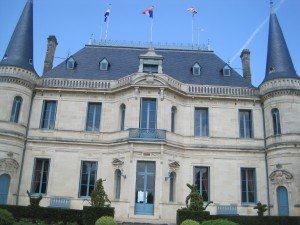2013 Château Palmer Margaux Bordeaux France Wine Tasting Note
4716 Views
|
Forest floor aromas are coupled with truffle and black plum in this soft, round wine. Featuring plenty of finesse, the wine ends with polished, fresh black raspberries and a little bit of dust in the finish. This wine is about elegance and purity of fruit. For tasters that feel 2009 and 2010 were too much, this is your year. From 51% Cabernet Sauvignon and 49% Merlot, the wine reached 13% ABV and will be aged in 55% new French oak barrels. With yields of 25 hectoliters per hectare, only 33% of the wine was used for the Grand Vin. 2013 is the last vintage not to be farmed 100% Biodynamically. Starting in 2014, everything will be 100% Biodynamic. According to Thomas Duroux, with 2013, the biodynamic farming helped balance the vintage. Without it, 2013 would have been much more challenging. The property will property will produce a 2013 historical blend. 91-93 Pts 4,716 Views Tasted Apr 20, 2014 |

When to Drink Chateau Palmer, Anticipated Maturity, Decanting Time
Chateau Palmer is not a wine for drinking young. The wine can be tannic, concentrated and reserved, in its youth. Young vintages can be decanted for an average of 2-4 hours, give or take. This allows the wine to soften and open its perfume.
Older vintages might need very little decanting, just enough to remove the sediment. Chateau Palmer is usually better with at least 12-15 years of bottle age. Of course, that can vary slightly, depending on the vintage character. Chateau Palmer offers its best drinking and should reach peak maturity between 15-45 years of age after the vintage.
Serving Chateau Palmer with Wine, Food, Pairings
Chateau Palmer is best served at 15.5 degrees Celsius, 60 degrees Fahrenheit. The cool, almost cellar temperature gives the wine more freshness and lift.
Chateau Palmer is best paired with all types of classic meat dishes, veal, pork, beef, lamb, duck, game, roast chicken, roasted, braised, and grilled dishes. Chateau Palmer is also good when matched with Asian dishes, rich fish courses like tuna, mushrooms, and pasta.

